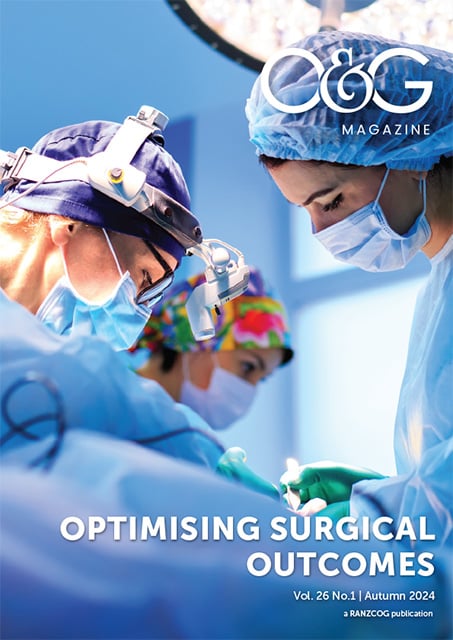The Cairns and Hinterland Hospital and Health Service (CHHHS) in Far North Queensland covers a geographical area of 142,900 square kilometres, supporting an estimated population of around 260,000 people. The health service also provides support and care for patients from the Cape and Torres Health service to the north. About 12% of people living in the CHHHS catchment area, and over 32% of patients treated by the health service, identify as Aboriginal and/or Torres Strait Islander.
The differences in health outcome measures between Indigenous Australians and non-Indigenous Australians are well known and documented. The objective of the National Agreement on Closing the Gap is: ‘To enable Aboriginal and Torres Strait Islander people and governments to work together to overcome the inequality experienced by Aboriginal and Torres Strait Islander people and achieve life outcomes equal to all Australians.’
What has become apparent is that improving outcomes for Indigenous Australians is not just a case of ensuring that patients have access to a health service. The 1989 National Aboriginal Health Strategy states that: ‘Health to Aboriginal peoples is a matter of determining all aspects of their life, including control over their physical environment, of dignity, of community self-esteem, and of justice. It is not merely a matter of the provision of doctors, hospitals, medicines or the absence of disease and incapacity.’
This means that for a health service to make a difference in health outcome measures for Aboriginal and Torres Strait Islander patients, it not only must be physically safe and accessible, but must also provide care that is culturally safe. In other words, a health service must have cultural capability. In the Queensland Health Aboriginal and Torres Strait islander Cultural Capability Framework 2010-2033, cultural capabilities refer to the ‘skills, knowledge and behaviours that are required to plan, support, improve and deliver services in a culturally respectful and appropriate manner.’ The Framework states that cultural capability is: ‘An ongoing journey of continuous individual learning and organisational improvement, in order to ensure best practice in health service delivery.’
So, what does the above all mean to clinicians in their individual health services? How can we improve our service delivery “on the ground” to ensure that we are doing our best to improve health outcomes for Aboriginal and Torres Strait Islander women?
Joyce Wallis is one of the many hard working Indigenous health workers employed by the Cairns and Hinterland Hospital and Health Service to provide care and support for Aboriginal and Torres Strait Islander women coming into the service for gynaecological care. Many of the Aboriginal and Torres Strait islander women coming to Cairns Hospital for gynaecology surgery, come from outlying communities. They are usually seen initially by the outreach gynaecology team from Cairns Hospital in their own communities, if possible, via visits which Joyce often attends. They do however need to travel to Cairns Hospital for most gynaecology surgical procedures. This can obviously be a daunting prospect for any woman. I asked Joyce for her views on the important aspects of ensuring cultural safety in the peri-operative setting in this region.
According to Joyce cultural awareness training for surgeons is very important. ‘And surgeons being rostered to travel to the remote clinics in Cape York and Torres Strait to see the women in their own communities is also very important. This will help the women because staff can say: ‘I have been to your community’, and little things like that can immediately put them at ease,’ says Joyce.
Joyce also feels that the written information given to Aboriginal and Torres Strait Islander women is too complex, and that it’s important to note that there are Indigenous women in some areas who are unable to read. Joyce suggests the provision of more culturally appropriate written information, which includes more visual content.
‘Women need to understand what aftercare is required after surgery, and to feel comfortable that their local community health clinic staff will be there to support them when they return to their communities after surgery,’
Joyce is currently only employed in a 0.2FTE capacity but feels that this is inadequate for her to provide care and support for all the Indigenous women coming into the Cairns Hospital for gynaecological surgery. She also feels that if Aboriginal and Torres Strait Islander (ATSI) health workers had access to the surgical lists, ‘they would be better able to follow up with the clients and speak to them again before surgery’.
She also feels this would enable the health workers to physically accompany the women to surgery for extra support, particularly women suffering significant anxiety.
In terms of trying to reduce women’s fears and anxieties prior to surgery, Joyce feels that the surgeon taking the opportunity to talk to the women from community before their surgery (not just prior to surgery in the anaesthetic bay) will put them at ease, as will surgeons speaking with the woman’s partner or a trusted family member about their procedure.
‘Giving clear advice regarding the recovery period and ensuring that the women know who to talk to when they return to their communities if they feel there are complications or need reassurance will help smooth their postoperative journey,’ adds Joyce.
Ultimately, cultural capability is an ongoing journey for both individuals and organisations, but its importance cannot be overstated if the gap is truly going to be closed.






Leave a Reply